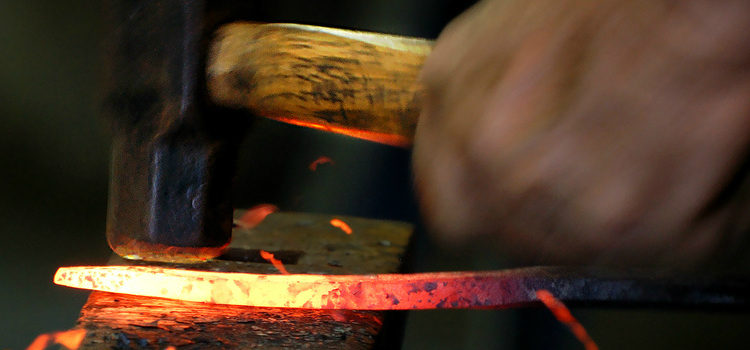
The Process of Tempering Steel
There is a very strong connection between tempering steel and building resilience to face adversity in life.
My father was a welder and fabricator for most of my life who developed a strong reputation. He was a brilliant man with a phenomenal visual and spatial acuity enabling him to build almost anything. When I was a teenager I remember my father teaching me that many tools and weapons were made from tempered steel which were made stronger than regular steel because they were subjected to a heating and cooling process.

Curious about the tempering process I recently found an intriguing Popular Mechanics article that detailed the difference. “Highly tempered steel is not stiffer than soft steel; it will just carry a greater load before it gives way.” The article illustrated this fact in a comparison.
“If two bars of steel 10 in. long are taken, one of highly tempered steel and the other of soft steel, each having a cross section of 1 sq. in., it will be found that for each pound weight hung from the lower end, the bars will stretch .000,0003 in. The soft steel does not stretch any more than the other.
After several thousand pounds have been added, however, a difference will develop; it will be found that when the load is removed, the soft steel does not return so precisely to its original length as the tempered steel. If the load is increased still more this difference becomes greater, and when a load of 40,000 lb. is reached, the soft steel will start to stretch rapidly and be permanently deformed. If the load is increased to about 65,000 lb., the bar will break. The same thing occurs with the tempered steel, but for very much greater loads. For the strongest of modern alloy steels, the bar may not indicate much of permanent elongation until a load of 215,000 lb. is reached, and it may not break until a pull of 240,000 lb. is exceeded. http://bit.ly/14poFh0
It is important to understand that steel is an alloy, or compound that is predominantly made of iron, generally has less than 2 per cent carbon, and may contain other elements such as chromium, silicon or aluminum. From a metallurgic perspective, a blacksmith will strategically temper steel by subjecting the metal to tremendous heating and cooling techniques. Sometimes the steel is cooled very slowly and other times it is quenched immediately in water. The process of heating and cooling essentially rearranges the atomic structure and transforms the steel.
Building Resilience
When I study people throughout history who have left their mark on the world, I see a tempering process that many of their peers were not subjected to. Like the blacksmith who puts the steel in the fire and cools it slowly, then plunges it into the fire again before immersing it suddenly in cold water, it seems that God takes individuals and does the same. You may experience high hopes then crushing disappointment, great joy then utter defeat. Over and over again you stand on the mountain top and then struggle through the valley of death. This character building process creates a seemingly invisible but formidable resilience.
It is important to note that in the beginning of the testing, when the stress of being stretched is only minimal, both steel bars appear to react the same. But as the stress increases and time passes, the difference between the steel bars becomes obvious. It is the stressful situations that will show how tempered we are and ultimately how resilient we are in the face of adversity.
What doesn’t kill you…
Ironically, Merriam-Webster reveals that the word temper is also used as a noun to depict a person’s state of feeling or frame of mind at a particular time. Usually it is in reference to a person being dominated by a single strong emotion or their proneness to anger. It is also worth noting that temper comes from Latin temperare to moderate, mix, temper; probably akin to Latin tempor-, tempus time. And as it means to exercise control over or to make stronger and more resilient through hardship.
The truth is, if you have not experienced it yet in life, you will experience it; pain that makes you forget your name, who you are, or where you come from. Pressures that feels as if your world is collapsing or that there is not enough air to breathe. So often people only see the pain and stress as accidents, misfortune or catastrophe. Somehow we feel better, playing the victim, making excuses or avoiding situations. When in fact the life challenges that we face are really just pressures being exerted on us to transform us, to push us beyond the limits we thought we had.
There is truth in the old proverb that says, ‘what doesn’t kill you will make you stronger.’
